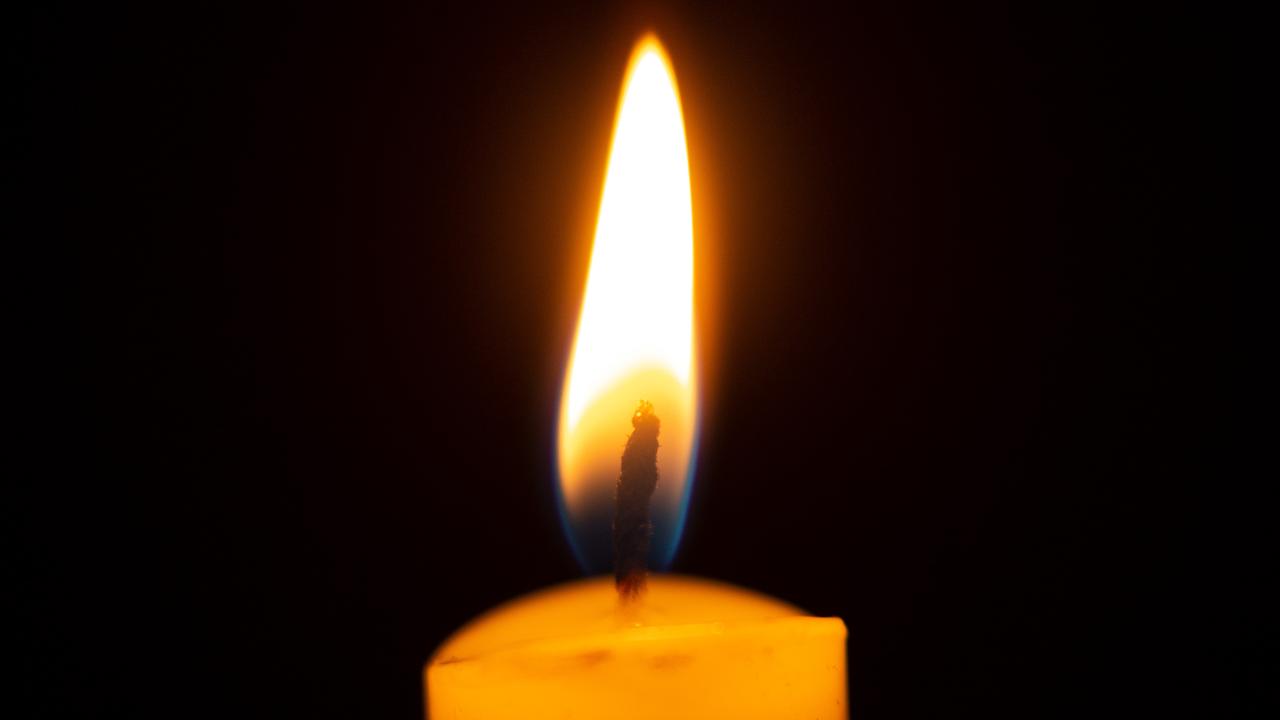‘Lone wolf’ terror strike brought death and fear to Australia a century before al Qaeda and ISIS
DRIVEN by hate and duty, two Muslim Afghans launched a suicidal killing spree in the heart of Australia — a horror that is now barely remembered.
ANZAC Centenary
Don't miss out on the headlines from ANZAC Centenary. Followed categories will be added to My News.
HOLDING rifles and nursing a grudge, the two gunmen crouched in dirt by the rail track as the train drew close.
Its open carriages were crammed with 1200 people, bound for a public holiday picnic in the Outback.
Men, women and children; teenagers on a date; older folk; a random cross-section of Australian society on a fun-filled break from the daily grind — and far, far away from an increasingly desperate conflict enveloping the globe.

But terrorists bring war home. Brutally. Suddenly.
The riflemen — beholden to a foreign power and creed — opened fire on the train, killing three people and wounding many more.
After hitting, they ran — retreating to an outcrop where they had planned a suicidal last stand, killing another man along the way and waiting for the inevitable bloody counter-attack by soldiers and police.
Today, in the age of ISIS and al Qaeda, it bears the hallmarks of a “lone wolf” attack — albeit by two “wolves” not one.
The attackers: immigrant Afghans, both apparently driven by loyalty to the Sultan of the Ottoman Empire and their Muslim faith; with one especially bitter towards a local community that he felt had not treated him fairly.

This happened in remote New South Wales, near the South Australian border, 100 years ago in a remarkably little-known incident known as the Battle of Broken Hill.
Almost four months before Australian soldiers would storm into action against the Turks at Anzac Cove in 1915, self-motivated agents of the Ottoman Empire brought World War One Down Under in a rampage that sparked headlines around the country then faded from mainstream memory.
LONE WOLVES SMOKING WEED, SEEKING VENGEANCE

One man’s terrorist is another’s freedom fighter; but the men behind the January 1 attack at Broken Hill used terror tactics, no question. They also left clear clues as to their motives in suicide notes.
Their names, as far as we know, were Gool Mahommed and Mullah Abdullah; men from what is now the Afghan-Pakistan border region, who had come to Australia as camel-drivers. There are no known photos of them.
Around the turn of the century there were growing groups of such cameleers around many key Outback towns; but relations with the white locals were not always easy, especially when the hardy camels and hardworking drivers were seen as taking jobs and profit away from local teamsters (not least because the immigrants were paid poorly by comparison).

Gool, aged around 41, drifted between jobs and became an ice cream vendor, while Abdullah, 20 years his senior, was a halal butcher and imam — a senior man in their small community, although that had not protected him from mockery in the past by non-Muslim Australians; even children used to throw stones at him.
Gool had served in the Ottoman sultan’s army in the early 1900s — committing himself to a ruler who also claimed to be the spiritual leader of all Muslims, before returning to Australia.
When war broke out in 1914 (Turkey lining up alongside Germany and Austro-Hungary against the Allies) Gool had written to the Turkish war ministry offering to re-enlist. Incredibly, given wartime censorship, he received a reply encouraging him to fight for the sultan but not specifying how.

Abdullah had more personal reasons for his actions — a grudge. Possibly unfairly, he had been recently prosecuted and fined an amount he could not afford, for illegal slaughtering and for not belonging to the butchers’ union. He wanted to punish the man he deemed responsible.
“Owing to my grudge against Chief Sanitary Inspector Brosnan it was my intention to kill him first,” wrote Abdullah in his final note, while adding he would die for his leader and faith.

“I was sitting brooding in anger. Just then the man Gool Badsha Mahommed came to me, and we made our grievances known to each other. I rejoiced and gladly fell in with his plans, and asked God that I might die an easy death for my faith, otherwise neither of us had any enmity against anybody.”
Press reports in the aftermath said the two were known to smoke ganja together; and surmised that the vulnerable butcher was swept up by the fervour of Gool, whose death note was also explicit.
“I hold the Sultan’s order duly signed and sealed by him. It is in my waist belt now, and if it is not destroyed by cannon shot or rifle bullets, you will find it on me. I must kill your men and give my life for my faith by order of the Sultan I have no enmity against anyone, nor have I consulted with anyone, nor informed anyone.”
The claims that they had “no enmity against anyone” ring strange given the events that followed.
A BLOODY LAST STAND AND MOB REVENGE

The attackers struck at 10:10am, as the train pulled out of town towards the venue at Silverton. Happy revellers who spotted them thought they must be out shooting rabbits — some even waving at the two — before it became terrifyingly apparent the men were after different game.
“Two men were also seen crouching behind the bank of earth which marks the line of the water main,” ran a report in the local paper.
“These men attracted the attention of Mr. M. Kenny, who was a passenger on the train. Mr. Kenny ... thought at first that there most be something wrong with the main, and that these men were attending to the damage. He then saw that they had rifles in their hands, pointed at the train, and almost simultaneously he saw and heard the rifles fired. The firing continued during the whole time the train was passing the two men, 20 or 30 shots being fired in all. The men being so close to the train could be plainly seen to be either Turks or Afghans.”
The duo, flying a homemade Turkish flag, were using single-shot breech-loading Martini-Henry and Snider rifles. Two people died on the train: 17-year-old Alma Cowie, who was on a date; and a Sanitary Dept warden, presumably an employee of Abdullah’s prime target Brosnan, called William Shaw. Six were injured, including Shaw’s daughter.

Two more were to die as the gunmen moved off, back towards the camel camp where they lived: Alfred E. Millard, who according to differing accounts was either shot as he sheltered in his hut or as he rode alongside the rail tracks; and James Craig, 69, who was caught by a stray bullet during the killers’ final firefight.
The alarm had been raised and police, soldiers, and local men who had grabbed guns converged on the area. Goal and Abdullah made their stand in a rocky outcrop, trading shots with the response force for 90 minutes.
CHILD WITH PEA-SHOOTER IN THE FIRING LINE
Amid the deadly gunfire, one moment of weirdness was noted by the Barrier Miner newspaper:
“Among the army of armed men who were fighting the murderous Turk and his companion yesterday was a boy with a pea rifle as his weapon. He took up a position well in the firing line, and appeared to be as keen as anyone for opportunities to take a shot at the enemy.”
Eventually the firing petered out with no more casualties on the law enforcement side; Abdullah was found dead and Gool fatally wounded, with 16 injuries. Their suicide notes were with them.

“One had been shot through the head, and the other had several wounds, and was motionless. On being carried down towards the road, by which the ambulance would be able to approach, Inspector Miller noticed a movement in the latter, who, on further examination, was found to be alive. He was removed to the Hospital, and there attended to, but he was evidently mortally wounded, and his death was only a question of a very few hours,” reported the Barrier Miner.
The town was in shock; as news spread, the nation was likewise horrified. Months later, Anzac troops fighting the Turks at Gallipoli would refer to the incident.
There was a thirst for revenge; but apart from one attempted mob attack on the Broken Hill camel camp — which was foiled by police — there was little outrage against the local Muslim community. The blame was laid elsewhere.
WHO WAS TO BLAME?

The common belief was that the men had been inspired by German propaganda; and that Berlin was to blame. The local German club was torched, the few Germans, Austrians and Turks in town were ordered out, and soon after Australia began the controversial internment of enemy aliens — even locking up local celebrities deemed “foreign”.
Germany and Turkey, despite being allies, had somewhat confused responses — German press apparently hailing the attack “by Turkish forces” while the Ottomans claimed Australia blamed Turkey and forged the suicide notes to boost support for the war.
Working with the sources available now, unless one vanishes down the conspiracy wormholes where governments order the murder of their own civilians to whip up war fever, it seems fairly conclusive the men were individually driven — by many of the same factors that drive other terrorist attackers.
Personal bitterness, loyalty to a cause, self-rationalising the targeting of civilians can all be found in the terror mindset; and the weaker-willed can often be convinced into extreme actions by a persuasive other.
The men were Muslims and terrorists, who cited their faith as part of their motivation. The Australian National University criminologist Professor Clive Williams notes:
“Both of the attackers were Mohammedans who recognised the Sultan of Turkey as the head of their religion.
“Australia was at war with Turkey. One theory is that the younger man, Gool, fired with fanatical patriotism, inflamed the older man’s resentment over local xenophobic attitudes.”
Some — mainly those opposed to Islam — see them in the same light as today’s ISIS pro-caliphate fanatics.
Others sound a note of caution, noting the two were extremists and not representative of the mainstream.
Broken Hill museum curator Christine Adams said recently the local Muslim community wanted nothing to do with the attackers and refused to accept their bodies.
“100 years later things are looked at differently,” Ms Adams, of Sulphide St Railway and Historical Museum, told the ABC. “We think that it needs to be treated with a certain amount of tact.
“It was two people, what they did was a terrible thing, it wasn’t a nation.”
What is interesting, as we mark the centenary of World War One, is how relatively unknown the story of Gool and Abdullah is. It is of course remembered in Broken Hill, where some feel it deserves greater recognition.
“I’d just like to see it acknowledged on a broader scale, I don’t think there are too many people in Australia that realised this happened,” Mayor Wincen Cuy told the broadcaster.
Originally published as ‘Lone wolf’ terror strike brought death and fear to Australia a century before al Qaeda and ISIS


